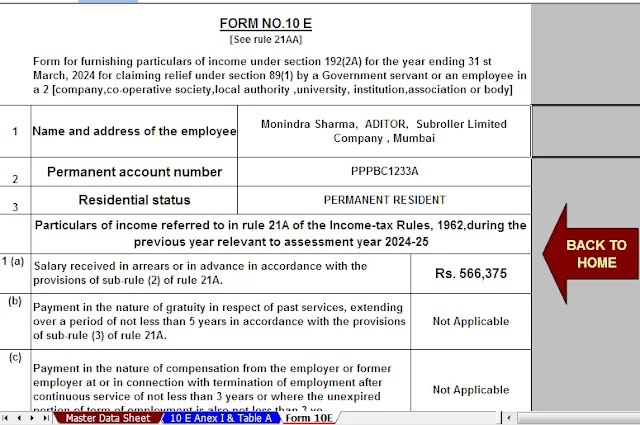Welcome to our guide to Indian income tax allowances and deductions. As taxpayers, it is important to
understand the various deductions and deductions available to us as they can significantly reduce our
tax liability. In this article, we cover everything you need to know about income tax deductions and
credits so that you can make the right decisions when filing your tax return.
Understanding Income Tax Deductions
Income tax deductions are specific deductions that can reduce your taxable
income. The following are some of the most common income tax exemptions in
You may also like-
Download and Prepare at a time 50 Employees Form 16 Part B for the F.Y.2022-23
1. The standard deduction is a fixed deduction of INR 50,000 (for the financial year 2022-23) from the total income of salaried employees. This deduction was introduced in the 2018 budget and is available to all employees, regardless of their actual expenses.
2. Rental Allowance (HRA) HRA is the allowance employees receive from their employer to pay for their rented premises. The HRA is fully or partially tax-free under certain conditions.
3. Leave Travel Allowance (LTA) LTA is an amount received by employees to cover their travel expenses while on leave. LTA can be claimed twice in a block of four years and the exemption is limited to actual travel costs incurred.
4. Children’s Education Allowance is money received by employees for their children’s education. The exemption limit for this surcharge is INR 100 per month per child, up to a maximum of two children.
5. Medical reimbursement is money employees receive to cover their medical expenses. The exemption limit for this amount is INR 15,000 per annum.
You may also like-
Download and Prepare at a time 50 Employees Form 16 Part A&B for the
F.Y.2022-23
Understand tax deductions
Income tax deductions are expenses
or investments that you can subtract from your total income. Following are some
of the most common income tax deductions in
1. Section 80C Section 80C is one of the most widely used tax-saving options for individuals. Under this section, you can claim a deduction of INR 1.5 lakh by investing in various instruments like Public Provident Fund (PPF), Equity Lied Savings Scheme (ELSS), National Pension Scheme (NPS), etc.
2. Section 80D Section 80D allows you to claim a deduction for health insurance premiums paid for yourself, your spouse, and your dependent children. The exemption limit is INR 25,000 for persons under 60 years of age and INR 50,000 for senior citizens.
3. Article 80E According to Article 80E, you are entitled to a deduction of interest paid on student loans for higher education. There is no upper limit on the amount that can be claimed as a deduction, and the deduction is valid for eight years.
4. Section 80TTA Section 80TTA allows you to claim a deduction of up to INR 10,000 on interest earned in savings bank accounts.
5. According to Section 80G, you are entitled to a deduction for donations to charities. The deduction threshold varies from 50% to 100% of the gift amount, depending on the type of institution.
Conclusion
In short, understanding deductions
and deductions is essential to reducing your tax liability. In this guide, we
have discussed common income tax deductions and deductions in
Remember to keep all necessary documentation and receipts relating to your claims as they may be required to substantiate your claims in the event of an audit.
I hope this guide helped me too. As always, it is best to consult a tax professional for detailed advice on your tax situation. With the knowledge you gain from this guide, you can make informed decisions when filing your tax returns and maximize your tax savings.




